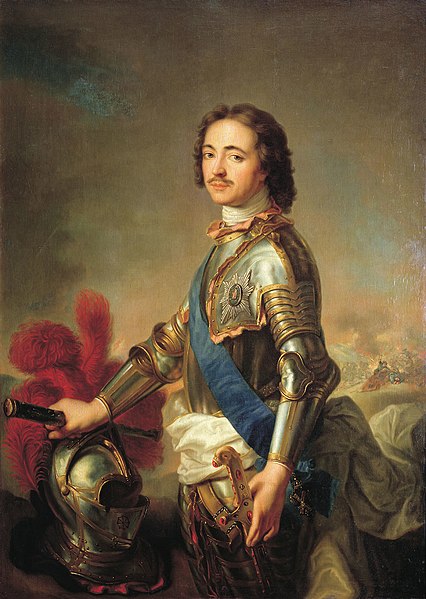The Treaty of Georgievsk was a bilateral treaty concluded between the Russian Empire and the east Georgian kingdom of Kartli-Kakheti on July 24, 1783. The treaty established eastern Georgia as a protectorate of Russia, which guaranteed its territorial integrity and the continuation of its reigning Bagrationi dynasty in return for prerogatives in the conduct of Georgian foreign affairs. By this, eastern Georgia abjured any form of dependence on Persia or another power, and every new Georgian monarch of Kartli-Kakheti would require the confirmation and investiture of the Russian tsar.
A photograph of the Georgian version of the Treaty of Georgievsk with Heraclius II's signature and seal, c. 1913
Entrance of the Russian troops in Tiflis on November 26, 1799. A painting by Franz Roubaud, 1886.
A 1790 Russian medal commemorating the treaty.
A 1983 Soviet stamp commemorating the 200-years anniversary of the treaty and celebrating it as "the first manifesto of the friendship and brotherhood between the Russian and Georgian peoples."
The Russian Empire, also known as Imperial Russia or simply Russia, was a vast realm that spanned most of northern Eurasia from its proclamation in November 1721 until its dissolution in March 1917. At its height in the late 19th century, it covered about 22,800,000 square kilometres (8,800,000 sq mi), roughly one-sixth of the world's landmass, making it the third-largest empire in history, surpassed only by the British and Mongol empires; it also held colonies in North America between 1799 and 1867. The empire's 1897 census, the only one it conducted, found a population of 125.6 million with considerable ethnic, linguistic, religious, and socioeconomic diversity.
The Victory at Poltava, painted by Alexander von Kotzebue in 1862
Peter the Great officially proclaimed the Russian Empire in 1721 and became its first emperor. He instituted sweeping reforms and oversaw the transformation of Russia into a major European power. Painting by Jean-Marc Nattier, 1717.
Empress Catherine the Great, who reigned from 1762 to 1796, continued the empire's expansion and modernization. Considering herself an enlightened absolutist, she played a key role in the Russian Enlightenment (painted in the 1780s).
1764, Rouble Catherine II ММД - Krasny Mint








